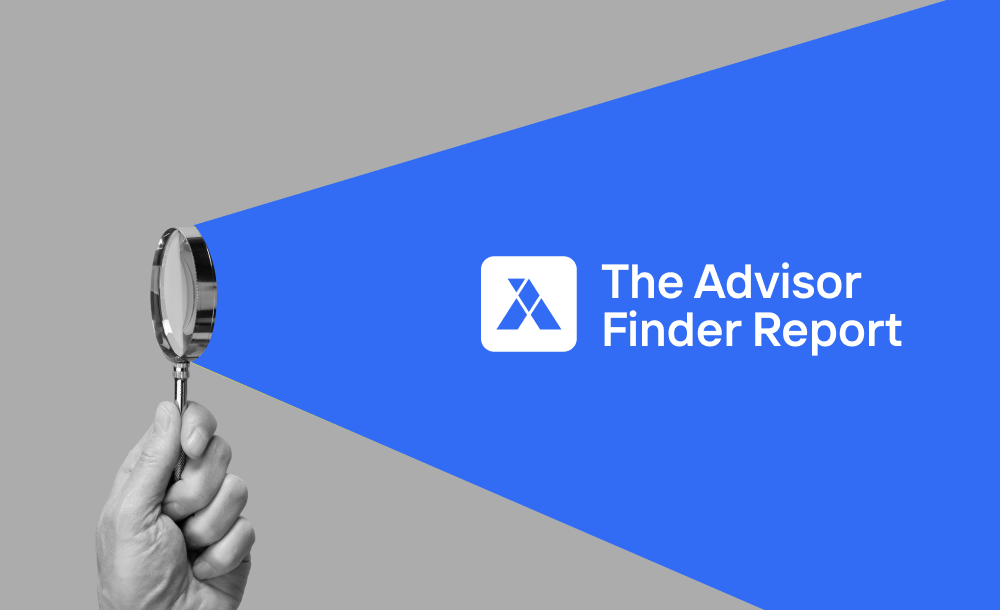
The Advisor Finder Report: Q3 2025
Welcome to the Q3 2025 issue of The Advisor Finder Report, a quarterly publication that surfaces the activity occurring on…
Business model, industry dynamics, competitive landscape, luck: all influence a company’s success. But for Monolith Software, based in Frisco, Texas, the number one driver of success has always been its people.
Monolith’s flagship product AssureNow is a unified service assurance solution that helps companies stay apprised of any downtime on their networks, infrastructure, and services.
Monolith was founded in 2005. Ten years later, the company decided to seek an investor for the business. Building out the management team — “getting the right people in the right seats,” as president David Knight puts it — was one of their primary goals in raising capital.
“Like any small company, we had a few people wearing many different hats,” says David, who served in an advisory role in the company for three years before becoming president in 2016. He and the rest of the team recognized that they needed outside help to develop an experienced management team and take other steps to grow the company to the next level.

David Knight (center) at the 2016 Evolution Capital Leadership Summit
 Monolith’s M&A advisor, Alliance Global Finance, privately marketed the company’s interest in growth equity on Axial, where private equity firm Evolution Capital Partners discovered the opportunity.
Monolith’s M&A advisor, Alliance Global Finance, privately marketed the company’s interest in growth equity on Axial, where private equity firm Evolution Capital Partners discovered the opportunity.
“We would not have found this opportunity if it hadn’t been for Axial,” says Barbara Hernandez, marketing and business development specialist at Evolution Capital Partners. Evolution Capital is based in Cleveland, Ohio — more than a thousand miles from Monolith’s Texas headquarters.
Monolith’s fundamentals definitely interested Evolution. As a software company, “they have very little capital expenditures, great gross profit margins, and wonderful positive cash flow cycles. That makes it easier to grow at an aggressive rate,” says Brendan Anderson, Evolution co-founder and managing partner. But as the two parties got deeper into discussions, what really stood out to Evolution was the strength of Monolith’s leadership team.
Evolution invests in small companies, typically $500k to $2 million in EBITDA. “There are issues with almost all of the companies we look at,” from messy financials to weak sales pipelines to inconsistent messaging to thin management teams, says Brendan. “The biggest differentiator is always the people. It’s about finding a small group of people who you know can create a plan and stick to it.” [pull_right]“The biggest differentiator is always the people. It’s about finding a small group of people who you know can create a plan and stick to it.”[/pull_right]
Brendan was particularly impressed by David Knight. “I’ll admit I’m drinking David’s Kool-Aid, but that guy is a machine. He works 24-7. He scares me sometimes,” Brendan says. Laughing, he adds, “In fact, he’s already called me [while we’ve been in this interview], right now.”
Evolution’s approach resonated with Monolith too. “We talked with four different private equity firms,” says David. “We knew that to get to the next level, we needed to think differently. Evolution was equipped to provide a process to help us grow and get the right people in the right seats.” Evolution advocates that all their portfolio companies use the Entrepreneurial Operating System, or EOS, which aims to unify leadership teams around an explicit company vision and instill the discipline necessary to execute on that vision. “From my perspective, that was very important, especially for an organization like ours that had been doing things the same way for many years.”
“When you’re taking on an investment, it’s never easy,” says David, who was previously VP of Corporate Development at Micromuse, a publicly traded network management software provider (he has also held executive positions at Motorola and SEI). “But regardless of how often you tell people what the process entails, until you live through it, no one believes that it’s going to be as hard as it is.”
For Monolith, taking time away from operations was particularly tough. “With a smaller company, you don’t have spare cycles. You’re always out chasing new opportunities and working with prospects and customers. Pulling people away from that is challenging. It took effort — evenings, weekends, and everything in between — to get things done, but we survived,” David says.
What David saw as barely scraping by, however, Brendan’s team perceived as an impressive effort to put the company’s best foot forward during the due diligence and negotiation stages. Like almost all companies at their stage of growth, there were a lot of issues to address and information to prepare. This included restating financials from cash-basis to GAAP, building a sales pipeline (and incorporating that pipeline into the financials), realigning marketing materials, conducting customer interviews, and more.
“They got all that done in a few months, or at least in a spot where we knew that we were dealing with the right people and they would get it done,” says Brendan. “Most companies couldn’t pull nearly as much together as they did in that time period. It was fantastic.”

Brendan Anderson (center), at the 2016 Evolution Capital leadership summit
Since the deal closed in April 2016, Evolution and Monolith have partnered on a number of initiatives to accelerate the company’s growth.Here are four outcomes of the partnership so far.
1. Expanding the team: Leading up to and following the investment, Monolith brought on a new CFO, CTO, and VP of Marketing to round out the executive team. The company’s headcount has nearly doubled, from 14 to 24 full-time employees, and there are plans to hire as many 30 more team members in the next year.
2. Implementing EOS: “There are a lot of operating systems out there,” says Brendan. “At some level it doesn’t matter which one you choose. If the top people embrace it, it always works. If the top people pretend to embrace it, it will never work.” Monolith hired a third-party facilitator to implement the system (they now meet with him every quarter). Monolith’s team also gets together regularly with Evolution to ensure that everyone is on aligned on their goals. “For a company the size of Monolith, that’s planning to grow from 10 to hopefully 60-90 employees in less than two years, EOS is a way to make sure people are on the same page, plan things out, and hold people accountable.”
3. Transitioning from an enterprise to a subscription-based business model: Moving Monolith to a recurring revenue business model — in which customers purchase a subscription to a piece of software, rather than buying it outright — was one of management’s main goals for the company. While the value per transaction is lower in a subscription model (e.g., customers pay less on a monthly or annual basis than they would buying the software upfront), companies benefit in the long term from the recurring and predictable revenue stream. This transition can be difficult for companies to make on their own, as it requires sacrificing short-term cash flow from large one-time purchases. In Monolith’s case, Evolution’s investment allowed Monolith to make the leap to this new model.
The change hasn’t been without challenges. “When you have a salesforce and customers and an ecosystem that are used to an enterprise model, it can be hard to get them to think differently. Even when it’s a better deal for the customer, it’s still a harder sale,” says Brendan. While one-time enterprise sales usually fall under a capital budget, software subscriptions fall under a company’s operating budget. “A capital budget expense is usually an easier sell than an operating budget expense. If you write a check for a two million dollars, and it’s supposedly a capital expenditure that won’t happen again next year, it’s viewed very differently than signing a contract that says, ‘I’m going to spend $300,000 a year for the next five years’ — even though that’s cheaper than the two million bucks! We’ve helped several companies with this type of transition and it still amazes me.”
4. Kicking off an inorganic growth strategy: Part of Monolith’s growth plan requires building out a true servicing group, a team which could work with customers using their software. Though Brendan says they didn’t think they’d be able to tackle this goal for quite some time, an opportunity arose sooner than expected. Right now, Monolith is in talks to acquire another company based in Europe that would give them this capability and more than double the size of the team (an initiative on which Evolution is actively advising them).
Evolution may invest in small businesses, but it isn’t unheard of for their portfolio companies to see exponential growth. For example, over the course of four years, they helped one of their investments, a real estate transaction services business, increase revenue by $49 million and hire 110 new employees.
Brendan doesn’t see growth like this as outside the realm of possibility for Monolith. “Look, I’m not declaring victory, but this is a group of people who have just jumped into and embraced our process and done all the things they’ve promised they would do. We couldn’t be more thrilled with what’s happening at Monolith.”
